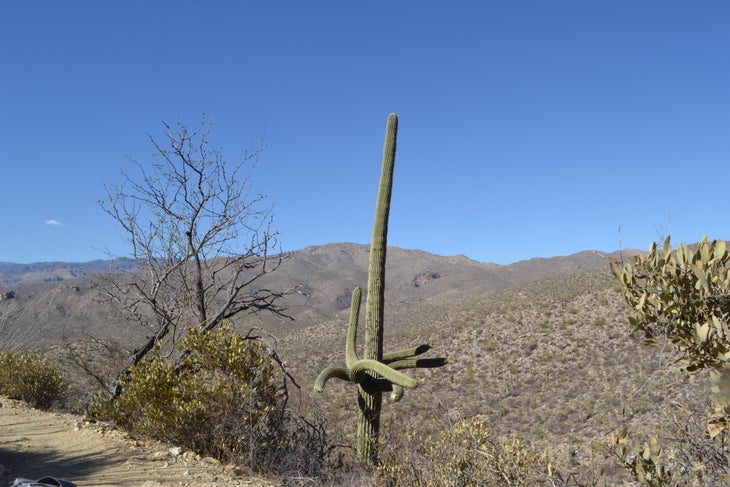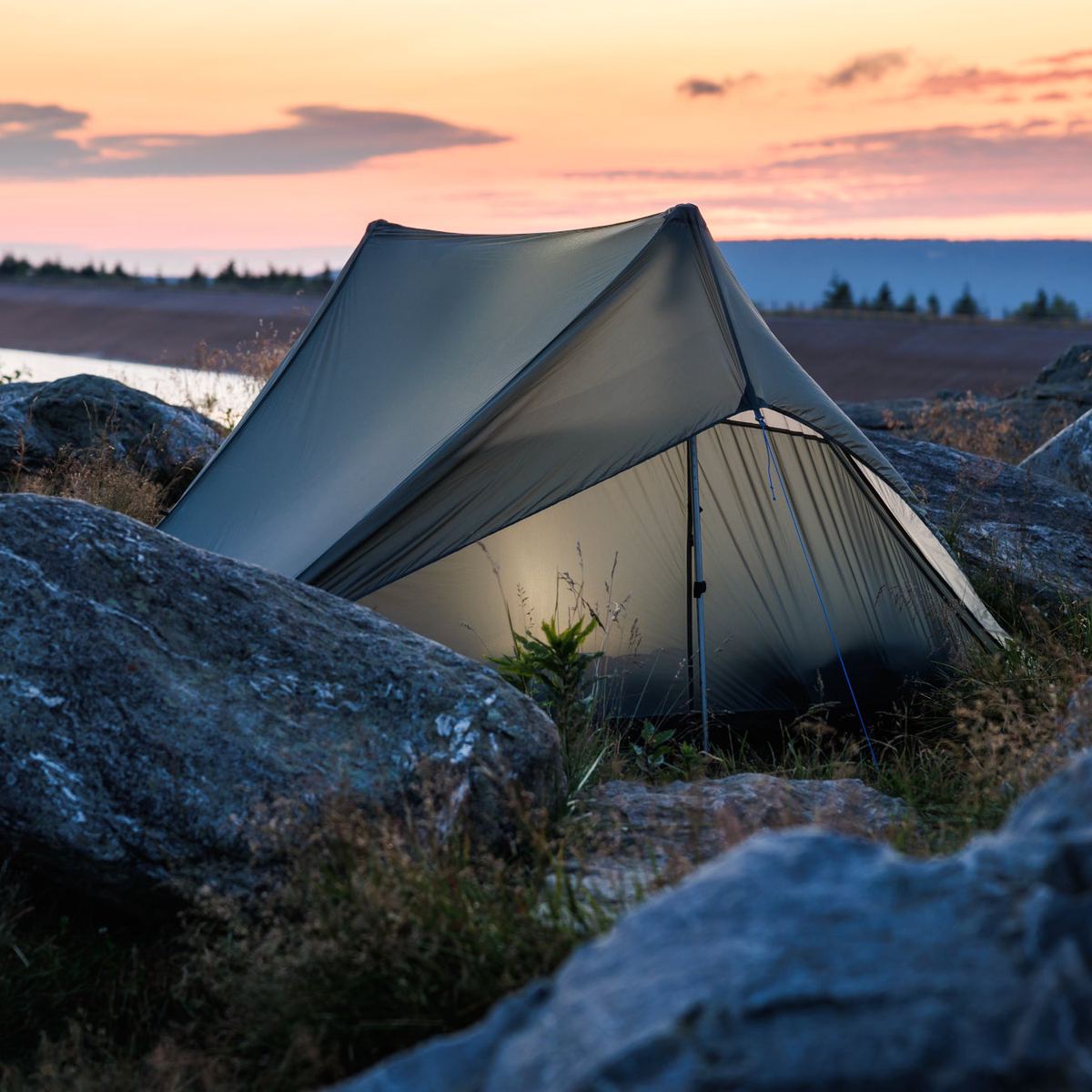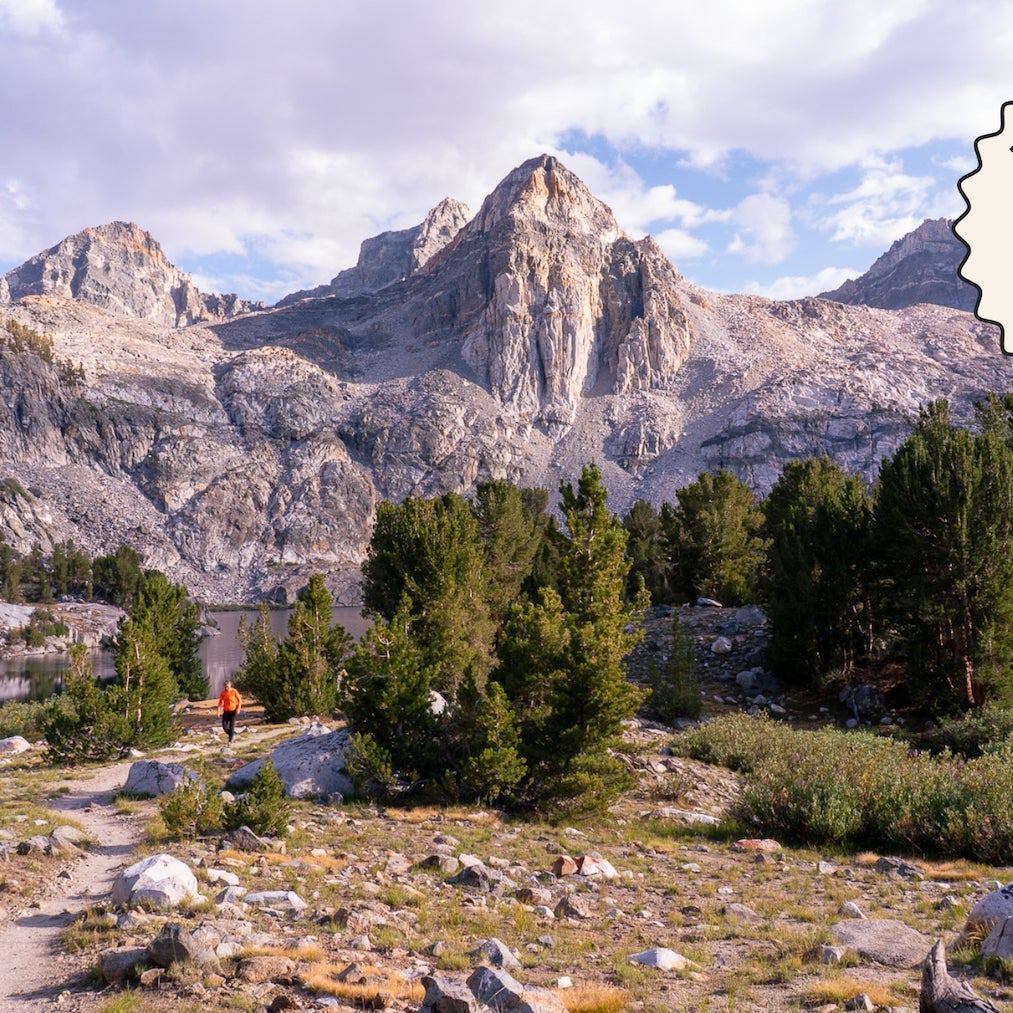I Made Mistakes Backpacking Saguaro National Park. Here’s What You Should Do Differently.
I Made Mistakes Backpacking Saguaro National Park. Here’s What You Should Do Differently.
I sort of failed on my quest to hike one of the southwest's less-backpacked parks. Learn from my mistakes.
Heading out the door? Read this article on the new Outside+ app available now on iOS devices for members! Download the app.
Saguaro National Park’s 91,000 acres is home to a host of animals, flora, peaks and natural wonders. The best way to explore all it has to offer, and the only way to camp in the park’s borders, is to go into the backcountry. I hiked 32 miles in the park in late March and made plenty of mistakes, like starting at the hottest part of the day and underestimating the steeps. It was rough. Here’s what I learned, so you don’t have to have the same experience on your next trip.
Highlights of Saguaro National Park’s Backcountry
Hiking through Saguaro’s backcountry is the only way to access the park’s campsites and the vast interior of the park that is otherwise unreachable. A great plan would be to backpack into a campground, make it a base camp for several days, and then take dayhikes elsewhere throughout the park to explore.
My favorite part of the hike, which was a combination of trails in the park, was the change in ecosystem. I started at an elevation of 2,700 feet; the landscape was the classic desert image you might conjure when you think of Saguaro: rocky and sandy, with innumerable cacti and a slightly desolate atmosphere. As I ascended to my final elevation of 8,000 feet, the environment totally changed. Dense forests of pine trees replaced the cacti, and nature felt lush and green once again.
The change in temperature was so dramatic that it went from 95 degrees at the start to mid-40s at the highest elevation, with small patches of snow still on the ground. The ascent also came with dramatic views of the Rincon Mountains. Manning Campground was also a highlight. It’s home to a cabin built in 1905 that’s on the National Register of Historical Places and currently serves as a base for park ranger operations.
Itineraries and Trails in Saguaro National Park
Saguaro National Park is divided into two parts with the city of Tucson in the middle. The area near the Rincon Mountains is home to six backcountry campsites, with multiple trails and a variety of possible itineraries. I started at Douglas Spring Trailhead, hiked to Douglas Spring Campground (6.3 miles in) and camped there. The next day, I hiked to Manning Campground (12.8 miles in) and then to Spud Rock Campground (another 2.9 miles) and stayed there overnight. Then I turned around and returned to Douglas Spring.
It’s also possible to take the Tanque Verde Ridge Trail starting at Javelina Picnic Area to Juniper Basin Campground (11.2 miles in) and then continue onto Grass Shack (another 6.2 miles) or Manning (another 8.3 miles) campgrounds. There are other trailheads, but Tanque Verde and Douglas Spring are the most easily accessible and don’t require an all-wheel drive vehicle.
Reservations: All overnight stays at Saguaro require a permit. On recreation.gov, visitors can book campsites, which cost $8 per night. Campsites are relatively easy to reserve; there’s not nearly the competition there is for sites that people may experience at parks like Zion.

The Dos and Don’ts of Saguaro Backpacking
I’ll be frank: The Douglas Spring Trail and high elevation of my hike beat my body into submission, so much so that I had to change my itinerary. Initially, I planned to go from Douglas Spring Campground (night 1), pass by Manning Campground and then hike to Happy Valley Campground (night 2), summit Rincon Peak, return to Manning Campground (night 3), and then return to the start. On day two, as I reached Manning Campground, I was looking at a 4-mile, 1,800-foot descent into Happy Valley that I would have to ascend the very next day. From Douglas Spring Campground to Manning Campground, I had gained 3,200 feet in 6 miles, and the thought of more hard climbs made my shaking legs and aching back quiver.
By a miracle, I had enough cell reception to log on to recreation.gov and change my campground reservation for the night to Spud Rock Campground, only 2.9 miles away from Manning. I then hiked 15.7 miles the next day to return to my car at the trailhead. While I wholeheartedly recommend backpacking through Saguaro for its natural beauty and vistas, I entirely disagree with my approach. Here are my dos and don’ts for a far more enjoyable experience.
Don’t underestimate the elevation gain
I would compare the trail I hiked to the outdoor version of a stairmaster. From Douglas Spring Trailhead to Manning Campground, hikers gain over 5,000 feet of elevation in 6.3 miles. Not only were the ascents long and sharp, but the steps up on the trail were frequently as long as the distance between my knee and foot, making for big, exhausting movements. I had planned to go from Douglas Spring Campground to Happy Valley (around 12 miles), but a smarter move would have been to go from Douglas Spring to Manning Campground (6.3 miles). I underestimated just how much the steep climbs would slow down my hiking pace and affect my mileage.
While I’m by no means an amazing athlete, I’m an avid backpacker and sport climber, and the trail humbled me. Also, as someone who lives at sea level, I suspect the higher elevation and heat also played a role in my increased fatigue, so take that into account as well. Play on the safe side and plan for fewer miles daily as you build your itinerary.
Do bring excess water
I started the hike with around 7 liters of water, more than I usually would, which was absolutely the right call. The first opportunity to refill water is at Douglas Spring Campground, 6.3 miles in. After that, the next best bet for water is at Devil’s Bathtub, about 1 mile from Manning Campground. Despite my thorough searching, I could not find the namesake spring at Douglas, so I wasn’t able to refill water until Devil’s Bathtub near the end of the second day of my hike. It’s best to call the park at (520) 733-5153 for the most up-to-date water report before you leave. The rangers at Manning Campground were also very friendly and offered recommendations on where to refill water.
Don’t start your hike late
On day one of my hike, I flew into the Tucson airport and wasn’t able to get to the trailhead until the afternoon. I began my hike at around 1 p.m., which made for a terrible experience. I was hiking the hottest, least shaded part of the trail during the most scorching time of day. The temperatures were at least in the 90s, and I had to rest about every 20 minutes due to the heat. I wish I had started either very early in the morning or much later in the day. As you gain elevation, the rest of the hike is much cooler and temperate, so timing matters much less.
Do plan for extreme temperature change
When I was looking at the forecast for Tucson during the span of my hike, the weather looked so hot that I almost didn’t bring a sleeping bag; I thought a liner would be sufficient. The overpacker in me ultimately did decide to bring my 15-degree bag along, which was an excellent choice. At an elevation of 7,400 feet, it was far colder at night at Spud Rock than it had been at the trailhead, and I even had to put my long underwear on at night. With temperatures ranging from the mid-90s to low 40s, bringing a variety of layers was key to staying comfortable on trail.
Saguaro National Park Backpacking Safety Information
- Wildlife: The National Park Service warns of multiple animal hazards in Saguaro, including black bears, mountain lions, rattlesnakes, and territorial Africanized honey bees. I did not encounter any of these on my hike, but it’s important to be prepared. Each campsite does have bear boxes to place food and any other scented materials.
- Insects: There have been cases of tick-borne spotted fever in the park, so wear long pants, bring tweezers, and be sure to check regularly for ticks.
- Cacti: I tripped and fell into a cactus at one point on the trail and got several barbs in my hands—another good reason to bring tweezers along.
Who should backpack through Saguaro National Park?
Similar to my experience in Joshua Tree, while the rest of the park was busy, the backcountry trails in Saguaro were empty. I only ran into three other hikers the entire time and enjoyed the solitude. From Douglas Spring, hiking up to Manning Campground is an excellent way to escape the crowds and the heat. If you’re up to a physically strenuous hike with the end goal of a taste of the true wilderness, these trails are for you. The hike is extremely difficult, with steep elevation changes and rocky, uneven terrain. My trekking poles saved me from falls and twisted ankles multiple times on sharp descents. Backpacking through Saguaro is tougher than the mileage counts suggest, but also immensely rewarding, especially if you plan it right.
From 2025







